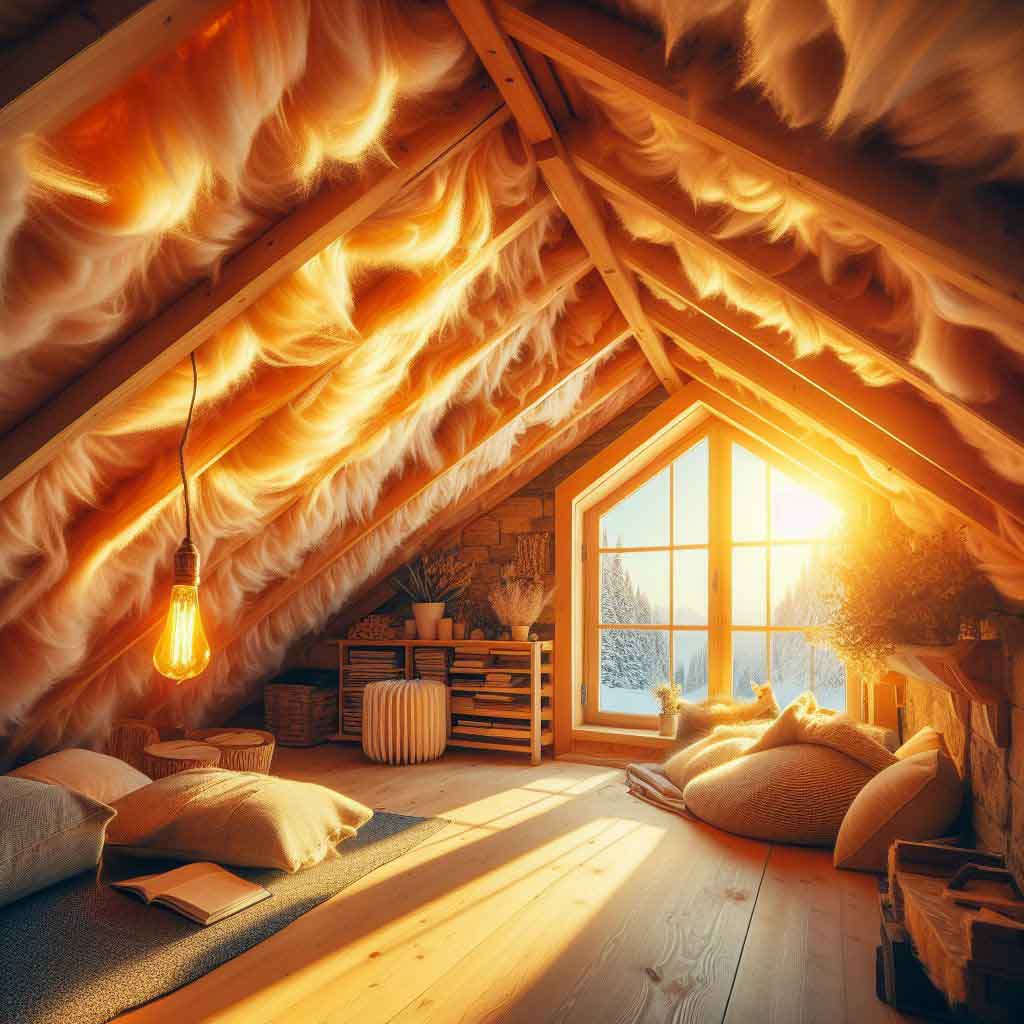The attic, often a cozy space under the roof, requires careful insulation to ensure comfort. Choosing the right materials for insulating the attic from the inside is crucial for maintaining warmth and creating a snug atmosphere in your home. Let's explore some of the best materials tailored for this task.
Mineral wool
- eco-friendly and high insulation
Mineral wool, derived from basalt rock, is an eco-friendly choice for attic insulation. Renowned for excellent thermal insulation, mineral wool retains heat even in severe cold. Its advantages include soundproofing and fire resistance.
Extruded Polystyrene (XPS)
- strength and low thermal conductivity
XPS, with closed-cell structure, provides outstanding thermal insulation. Its strengths lie in high durability and low thermal conductivity. XPS is resistant to moisture, making it ideal for attics where condensation is a concern.
Polyurethane foam (PUF)
- warmth in a lightweight package
PUF, a lightweight material, offers excellent thermal insulation. Its lightness facilitates easy installation, crucial in confined attic spaces. PUF effectively retains heat and maintains its qualities over time.
Vapor barrier films
- managing moisture
In attic insulation, preventing heat loss is as important as managing moisture. Vapor barrier films act as a barrier, preventing moisture from penetrating insulation. This is vital in averting condensation-related issues.
Wood fiberboard
- aesthetic appeal and eco-friendliness
Wood fiberboard is a great choice for those valuing aesthetics and eco-friendliness. Providing a natural, warm appearance, it offers good thermal insulation. Additionally, it contributes to humidity regulation, promoting a healthier indoor environment.
Choosing the right insulation
When selecting materials for insulation and their installation, preventing issues such as ice dams, leaks, and moisture inside the insulation is essential.
Detecting roof leaks can be challenging since water may appear in unexpected places due to the absorption of insulation material. If lacking experience, it is advisable to consult professionals capable of correctly installing insulation and ventilation.
There is no one-size-fits-all insulation material for the attic, as the choice depends on specific circumstances. Consider the following when making decisions:
- Planning temporary insulation before future renovations? Fiberglass may be a suitable choice. For long-term perspectives, opt for more durable materials.
- Residing in a rainy region with high humidity? Prefer less vapor-permeable materials that are water-resistant. In areas with infrequent rain, cost-saving on this aspect might be feasible.
- Preferring simplified installation? Artificial insulation materials are typically more convenient to install and do not demand specific precautionary measures.
- Concerned about fire safety? Mineral wool can be a better choice as it withstands high temperatures.
Conclusion
When selecting materials for insulating your attic from the inside, consider not only their thermal insulation properties but also factors like eco-friendliness, resistance to moisture, durability, and ease of installation. A combination of various materials may yield optimal results, ensuring your attic is not only warm but also stylish and comfortable. Remember, proper insulation not only creates a cozy space but also aids in energy conservation, reducing long-term heating costs.



